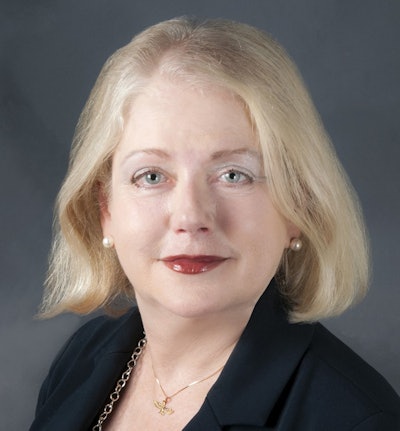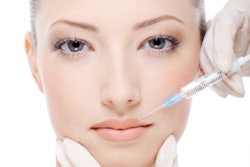
Editor's note: This is the first part of a two-part series that will run this week from Dr. Scarlett. In this article, Dr. Scarlett shares the following message: "Absence of evidence leads to differences in the safety of dental care; the absence of evidence is not evidence of absence."
 Margaret Scarlett, DMD.
Margaret Scarlett, DMD.Recently, an uptick occurred in the COVID-19 message chaos about the safety of dental care. There is confusion among the public and profession. Why?
More importantly, what do we do? Patients were confused by the limitation of dental care to emergencies in March and April and the reopening in May and June. Then, in mid-August, a statement from the World Health Organization (WHO) again urged deferral of routine dental care.
The WHO guidance resulted in rebuttals from the FDI World Dental Federation, the ADA, the Association of Dental Support Organizations (ADSO), and many other dental associations. Each of these organizations responded by noting that the WHO statement is inconsistent with their positions, with some citing millions of safe dental visits without reported transmission.
How do we allay the fears of nervous dental team members and patients?
There is no simple answer, but the issues should be addressed systematically, based on the evidence. Evidence-based dentistry (EBD) was the new normal before the pandemic and is now the current standard.
We don't have evidence that dentistry is unsafe, and that's because dental care lacks a system for studying risks of infection systematically. Current assessments of healthcare-associated infections (HAIs) don't include dentistry. Only recently has reporting from another healthcare facility, nursing homes, been included in HAIs, from the U.S. Centers for Medicare and Medicaid Services. This is because about 40% of deaths from COVID-19 occur in nursing homes.
What is evidence?
Evidence-based dentistry relies on building blocks of evidence. These include peer-reviewed journals of research, with sound methodology carefully executed, statistical standards, and conclusions consistent with results. Clinical trials, which require thousands of human subjects for statistical validation of efficacy, are expensive. Therefore, most dental products and procedures lack prospective, double-blind clinical trial data. EBD is based not on the gold standard of clinical trials but on a "silver standard" of smaller, peer-reviewed data.
These can include cross-sectional, cohort, case-control studies, or retrospective data, comparative studies, etc., that are relied upon in dentistry. Moreover, the practice-based research networks that gather longitudinal data by practitioners connected to academic centers are a recent addition to EBD.
What evidence do we have?
We don't have all the evidence on the safety of dental care. The problem is that right now, the void in the dental safety literature and the lack of investment in tracking HAIs in dental offices is our problem.
As Pogo said in his classic cartoon, "We have met the enemy and it is us!" Simply, we do not have a self-monitoring system for studying HAIs in outpatient dental practice. Interim guidance for safe dental practice is based on the best evidence we have. Unfortunately, it is not good enough. More should be done.
Our separate, private system of care decided to distance itself from bigger systems of healthcare, including reporting. However, it may be time to begin a reporting system in the interest of patient safety. Starting a pilot phase of volunteer offices followed by an evaluation period and then implementation will take years. We need to start now.
What are we doing to get evidence for safe dental care?
One of the problems is that in the race against time in this pandemic, we are relying on some literature that is not peer-reviewed.
Many early releases are not carefully reviewed by peers. Later, after review, some data are revised after initial release. That causes confusion about the state of the science.
Now, why did the WHO release interim guidance? Maybe a rise in pandemic cases, especially in the U.S., was a concern. Others may include the following:
- The infectious dose for COVID-19 is unresolved.
- Aerosols containing virus can transmit disease, and dental offices generate more aerosols with 200,000 revolutions-per-minute (rpm) electric handpieces and/or 400,000 air-turbine handpieces and other devices, such as air-water syringes.
- Dentistry involves frequent, close, and prolonged contact with patients.
Faced with high theoretical occupational risks, and unknown actual risks, the WHO released recommendations based on an abundance of caution. At least one reference, dental care without aerosols from the U.S., fails to meet an EBD standard. No Cochrane Oral Health, clinical trials evidence, rapid review, or dental HAI data are cited.
Evidence is needed that dentistry provides safe care. Who should supply it?
For decades, the U.S. Centers for Disease Control and Prevention (CDC) has collected, calculated, and reported surveillance data of standardized infection rates for the full range of healthcare facilities nationally.
However, except for some sentinel hospital studies or dialysis clinics, it is not mandatory that facilities report their data. A barrier is that in some cases, hospitals are penalized in reimbursement for reporting healthcare-associated infections.
The National Healthcare Safety Network (NHSN) is a current CDC reporting system that monitors HAIs, but not in outpatient facilities. It is time to include dental offices.
Margaret Scarlett, DMD, is an infectious and chronic disease prevention specialist, dentist, and author. For 30 years, Dr. Scarlett has provided expert guidance on infectious diseases and infection control as a consultant to the Centers for Disease Control and Prevention, the World Health Organization, the Pan American Health Organization, the United States Agency for International Development, the American Red Cross, and many consumer health companies.
The comments and observations expressed herein do not necessarily reflect the opinions of DrBicuspid.com, nor should they be construed as an endorsement or admonishment of any particular idea, vendor, or organization.



















